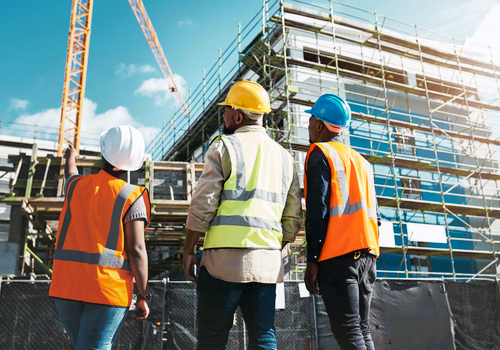The Role of Construction Statistics in Shaping Canada’s Infrastructure
Canada, known for its vast and diverse landscape, boasts a continuously evolving infrastructure that plays a pivotal role in the nation’s development and prosperity. The construction industry in Canada is a significant driver of economic growth, and the effective shaping of the country’s infrastructure relies heavily on accurate and comprehensive construction statistics. In this article, we will delve into the critical role that construction statistics play in shaping Canada’s infrastructure.
Understanding Canada’s Diverse Infrastructure
Before we delve into the importance of construction statistics, it’s essential to grasp the vastness and diversity of Canada’s infrastructure. From coast to coast, Canada’s infrastructure encompasses an intricate network of roads, bridges, tunnels, airports, railways, ports, energy facilities, water systems, and more. The quality and efficiency of these infrastructures directly impact the daily lives of Canadians and the country’s economic growth.
The Significance of Construction Statistics

1. Planning and Decision-Making
Construction statistics are the backbone of effective infrastructure planning and decision-making. Government bodies, construction companies, and urban planners rely on data to assess the current state of infrastructure, identify areas in need of improvement, and plan for future development. This data-driven approach ensures that resources are allocated efficiently and projects are prioritized based on need.
Link to Canada’s Infrastructure Data: Canada’s Infrastructure – canada.ca
2. Economic Impact Assessment
The construction industry is a significant contributor to Canada’s economy. By analyzing construction statistics, policymakers can evaluate the economic impact of construction projects. This assessment includes job creation, GDP contribution, and the overall economic health of the construction sector. Such insights aid in crafting policies that foster economic growth.
3. Safety and Regulation Compliance
Safety is paramount in the construction industry. Construction statistics provide valuable insights into safety records, incidents, and compliance with regulations. By monitoring these statistics, authorities can identify potential safety hazards and take corrective actions to ensure the well-being of workers and the public.
4. Sustainability and Environmental Impact
In recent years, sustainability has become a top priority in construction. Construction statistics help track the use of sustainable materials, energy-efficient building practices, and the reduction of carbon emissions. This data allows Canada to monitor progress toward its environmental goals and make informed decisions to minimize the environmental impact of construction projects. Read about the evolution of construction data collection methods in our article.
Case Study: Transportation Infrastructure
Let’s explore the role of construction statistics in shaping a specific aspect of Canada’s infrastructure: transportation.
Highway Expansion Projects
Imagine a scenario where a province in Canada is considering a significant expansion of its highway system. To make an informed decision, government officials need construction statistics to assess the current traffic volume, congestion patterns, and accident rates on existing highways. They also require data on projected population growth and economic development in the region.

By analyzing these statistics, decision-makers can determine the feasibility of the project, allocate budgets effectively, and design roadways that meet future demands. Furthermore, they can prioritize safety measures and environmental considerations based on relevant data.
Challenges and Future Trends
While construction statistics are invaluable, several challenges exist in collecting and analyzing this data. These challenges include data accuracy, privacy concerns, and the integration of new technologies such as Building Information Modeling (BIM) and Internet of Things (IoT) devices.
However, the future of construction statistics looks promising. Advanced data analytics, artificial intelligence, and machine learning are being leveraged to extract deeper insights from construction data. This allows for more accurate predictions, proactive maintenance, and enhanced decision-making.
Conclusion
In conclusion, construction statistics serve as the cornerstone of Canada’s infrastructure development. They empower decision-makers with the information needed to plan, prioritize, and execute construction projects effectively. As Canada continues to grow and evolve, construction statistics will remain a vital tool in shaping the nation’s infrastructure for a sustainable and prosperous future.
